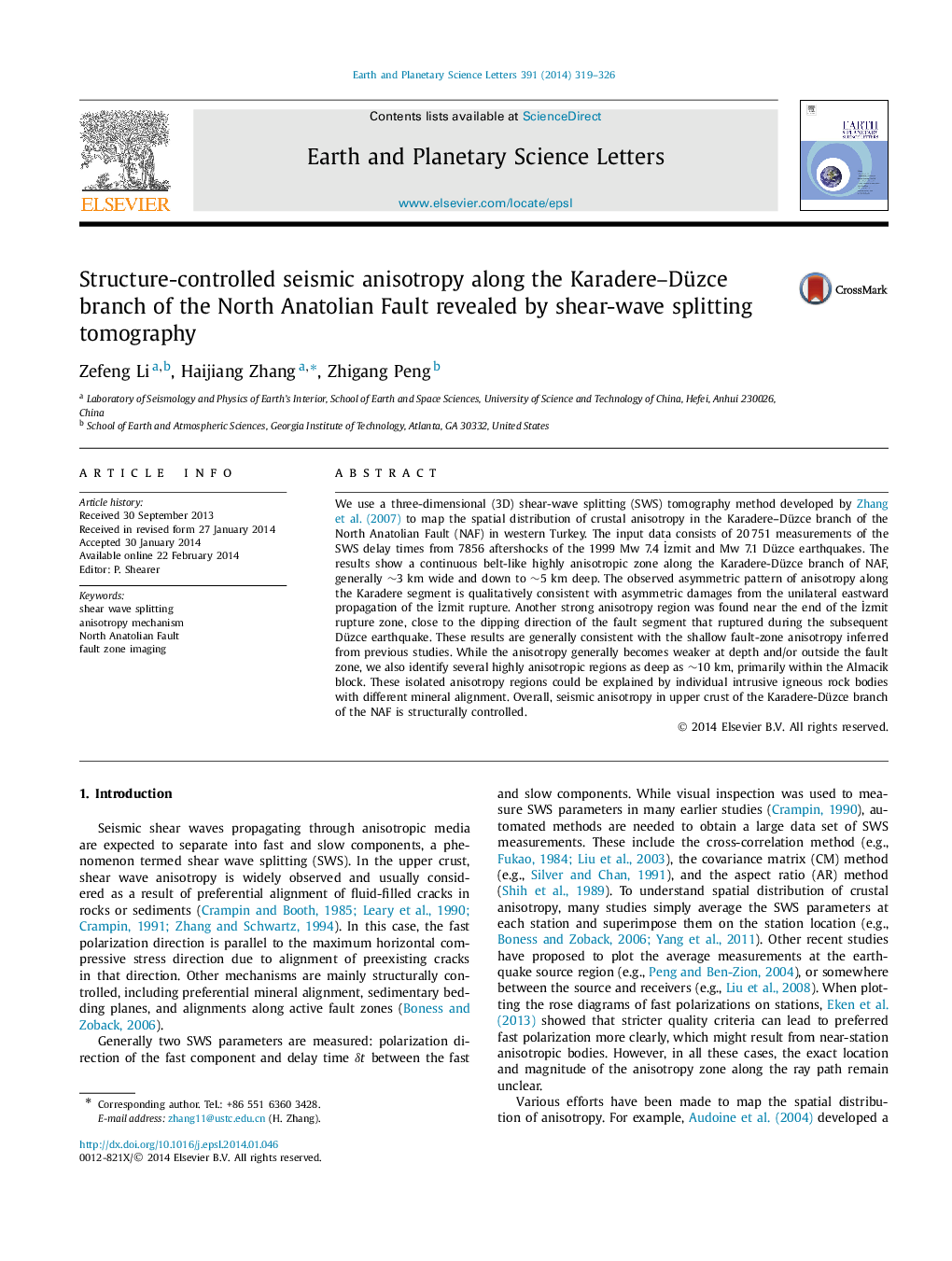| Article ID | Journal | Published Year | Pages | File Type |
|---|---|---|---|---|
| 6429460 | Earth and Planetary Science Letters | 2014 | 8 Pages |
Abstract
We use a three-dimensional (3D) shear-wave splitting (SWS) tomography method developed by Zhang et al. (2007) to map the spatial distribution of crustal anisotropy in the Karadere-Düzce branch of the North Anatolian Fault (NAF) in western Turkey. The input data consists of 20â751 measurements of the SWS delay times from 7856 aftershocks of the 1999 Mw 7.4 Ä°zmit and Mw 7.1 Düzce earthquakes. The results show a continuous belt-like highly anisotropic zone along the Karadere-Düzce branch of NAF, generally â¼3 km wide and down to â¼5 km deep. The observed asymmetric pattern of anisotropy along the Karadere segment is qualitatively consistent with asymmetric damages from the unilateral eastward propagation of the Ä°zmit rupture. Another strong anisotropy region was found near the end of the Ä°zmit rupture zone, close to the dipping direction of the fault segment that ruptured during the subsequent Düzce earthquake. These results are generally consistent with the shallow fault-zone anisotropy inferred from previous studies. While the anisotropy generally becomes weaker at depth and/or outside the fault zone, we also identify several highly anisotropic regions as deep as â¼10 km, primarily within the Almacik block. These isolated anisotropy regions could be explained by individual intrusive igneous rock bodies with different mineral alignment. Overall, seismic anisotropy in upper crust of the Karadere-Düzce branch of the NAF is structurally controlled.
Related Topics
Physical Sciences and Engineering
Earth and Planetary Sciences
Earth and Planetary Sciences (General)
Authors
Zefeng Li, Haijiang Zhang, Zhigang Peng,
